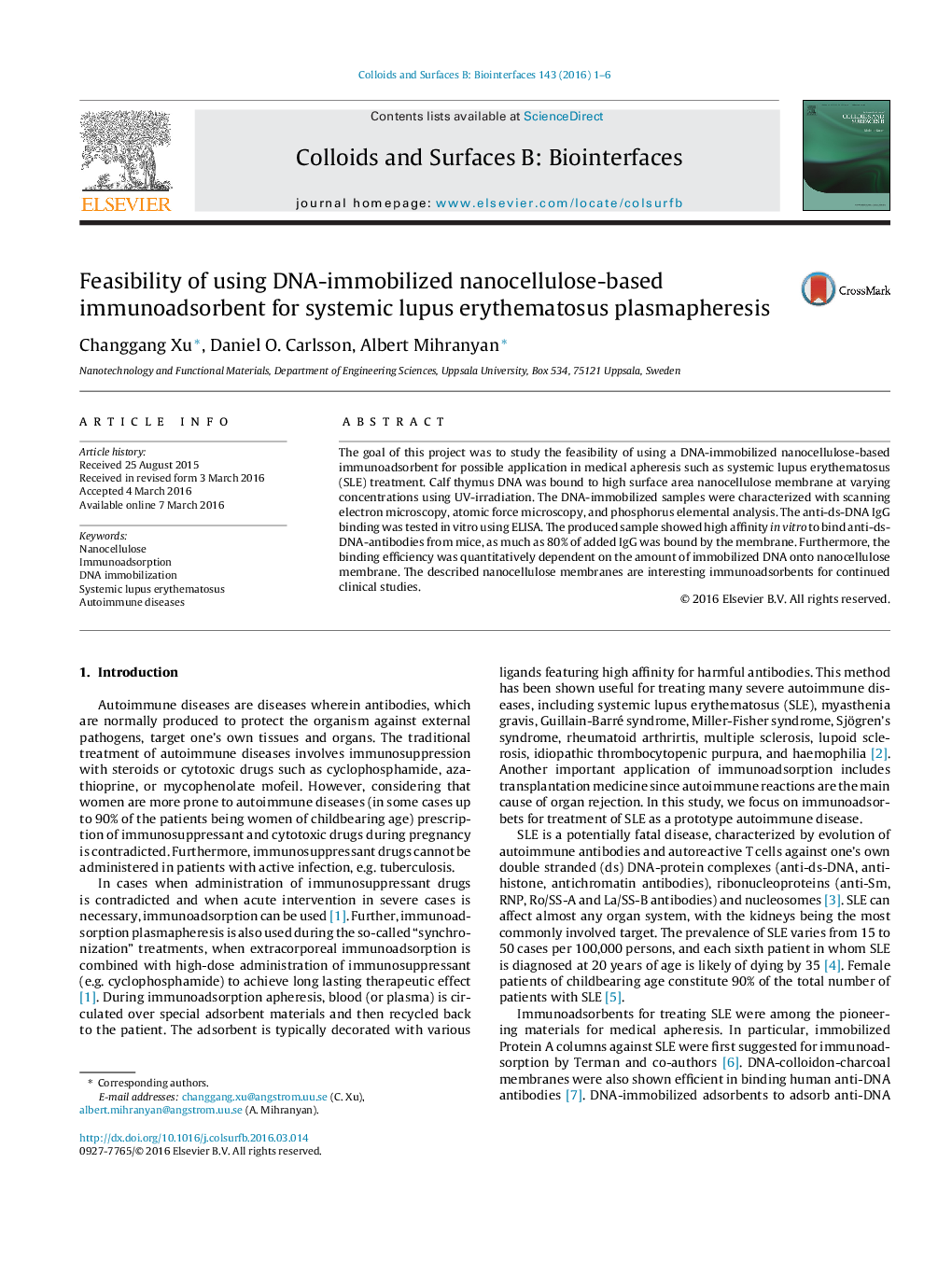| Article ID | Journal | Published Year | Pages | File Type |
|---|---|---|---|---|
| 599016 | Colloids and Surfaces B: Biointerfaces | 2016 | 6 Pages |
•A DNA/nanocellulose membrane was developed for medical apheresis in SLE treatment.•dsDNA was immobilized onto the high surface area membrane using UV-irradiation.•The membrane showed high affinity in vitro to bind anti-ds-DNA-antibodies from mice.
The goal of this project was to study the feasibility of using a DNA-immobilized nanocellulose-based immunoadsorbent for possible application in medical apheresis such as systemic lupus erythematosus (SLE) treatment. Calf thymus DNA was bound to high surface area nanocellulose membrane at varying concentrations using UV-irradiation. The DNA-immobilized samples were characterized with scanning electron microscopy, atomic force microscopy, and phosphorus elemental analysis. The anti-ds-DNA IgG binding was tested in vitro using ELISA. The produced sample showed high affinity in vitro to bind anti-ds-DNA-antibodies from mice, as much as 80% of added IgG was bound by the membrane. Furthermore, the binding efficiency was quantitatively dependent on the amount of immobilized DNA onto nanocellulose membrane. The described nanocellulose membranes are interesting immunoadsorbents for continued clinical studies.
Graphical abstractUV-light immobilized DNA onto nanocellulose quantitatively binds anti-ds-DNA antibodies. The produced immunoadsorbent paper can be useful for developing plasmapheresis materials for treatment of systemic lupus erythematosus (SLE) patients.Figure optionsDownload full-size imageDownload as PowerPoint slide
